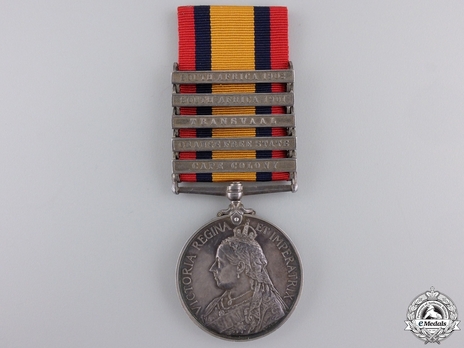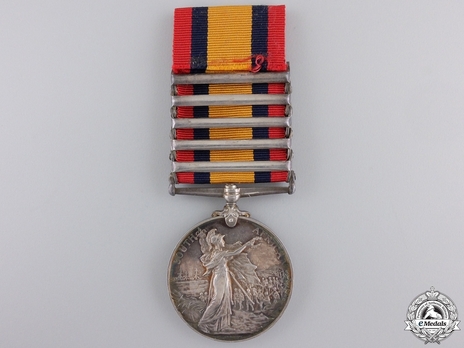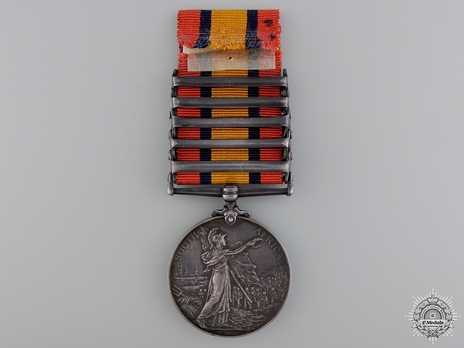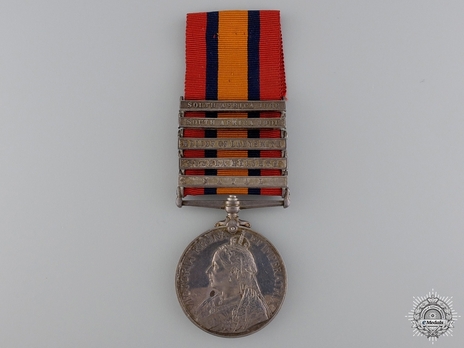Queen's South Africa Medal, in Silver (minted without date, with 5 clasps)
CATEGORY: Version
SKU: 02.GBR.0215.101.01.020
Estimated market value:






Estimated market value:
The Queen’s South Africa Medal was instituted by Queen Victoria in 1899 and authorised by Army Order. The Medal was awarded to British and Colonial military personnel, civilians, noncombatants, and other war correspondents who served during the Anglo-Boer War between 1899 and 1902. While the Silver Medal was generally awarded, Bronze Medals were awarded to some local and native contingents, Indian personnel, members of the West India Regiment, and other non-attested men. It is estimated that 178 000 Medals were awarded.
The following 26 clasps denoting the campaign served were authorized for wear with the Silver Medal:
1. “CAPE COLONY”
2. “RHODESIA”
3. “RELIEF OF MAFEKING”
4. “DEFENCE OF KIMBERLEY”
5. “TALANA”
6. “ELANDSLAAGTE”
7. “DEFENCE OF LADYSMITH”
8. “BELMONT”
9. “MODDER RIVER”
10. “TUGELA HEIGHTS”
11. “NATAL”
12. “RELIEF OF KIMBERLEY”
13. “PAARDEBERG”
14. ORANGE FREE STATE”
15. “RELIEF OF LADYSMITH”
16. “DRIEFONTEIN”
17. “WEPENER”
18. “DEFENCE OF MAFEKING”
19. “TRANSVAAL”
20. “JOHANNESBURG”
21. “LAING’S NEK”
22. “DIAMOND HILL”
23. “WITTEBERGEN”
24. “BELFAST”
25. “SOUTH AFRICA 1901”
26. “SOUTH AFRICA 1902”
There are 3 different versions of the Silver Medal which vary by reverse engraving and design. The first version was instituted at the beginning of the war and depicts the inscription “SOUTH AFRICA 1899-1900” as well as an image of Britannia holding a wreath that extends to the “R” of “AFRICA”. The second version of the Medal was issued after 1900, as the war continued. Since many Medals were already minted, the reverse date “1899-1900” was removed. The reverse design of the second version Medal is the same as the first except that a faded impression of the dates “1899-1900”, can sometimes be seen. A third version of the Medal was minted with an altered reverse image after a need for more awards arose when the first and second versions of the Medal ran out. The third version features a design of Britannia holding a wreath that extends to the “F” of “AFRICA” and is not dated. Approximately between 50 and 70 dated Medals were issued to Canadian troops.
The Medal was issued named, however, unnamed versions are known to be in existence. The value of the Medal significantly varies with each recipient.
There may be additional versions of the Medal.

Comments
Sign in to comment and reply.


Scroll Top